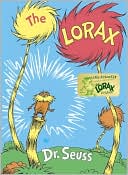It’s April Fools Day and here’s a look back at some of the really foolish, yet very earnest, things I’ve tried in the name of planet protection. This list is by no means complete, and I’m sure I’ll have some new items for 2013!
Earth shoes -- OK, they’re not really an environmental item, but this is where it all started for me in the ‘70s. That “negative heel” was supposed to make me feel close to the earth, but it just gave me muscle strain. If you really want to wear ugly shoes that scream “I’m crunchy!” just wear Birkenstocks like all of the other greenmomsters out there.

Coconut oil – I decided to decrease my body’s exposure to harmful chemicals found in cosmetics by substituting coconut oil for my usual face cream. I looked absolutely fabulous, until every pore on my face became clogged, leaving me looking significantly younger. And by significantly younger I mean I looked like the acne-plagued teenager I once was.
Natural deodorant – Again, trying to lessen my chemical load. Been there, done that, got the pit-stained t-shirt.
Visiting the Dismal Swamp after a major flood in August – I’m often referred to as the Julie McCoy of our family, planning all sorts of activities and trips. One type of trip I love planning is the outdoorsy, environmentally-educational trip. But there was one time when I ran the family’s Love Boat aground. I had read that the Dismal Swamp in southern Virginia was an absolutely beautiful place – I’ve seen pictures since our fateful trip, and indeed, it is a memorable spot. But timing is everything in life. I ignored our friends who mentioned that maybe “dismal” wasn’t a good name for a family vacation spot, maybe right after a major flood wasn’t the right timing, and maybe the mosquito population would be booming in the middle of August. “Pshaw!” I said. This was a natural area just waiting to be discovered by me and my family! We loaded up my then 2 year old son in the hiking backpack and headed into the swamp! Approximately 30 minutes later, we emerged with our tails between our legs, sweaty and swollen from mosquito bites. Fortunately, we didn’t catch malaria, I didn’t turn our Love Boat excursion into Gilligan’s 3-hour tour, and there was a nearby reggae festival to help us forget our swamp sorrows.
Vegetarian dog food – Although eating lower on the food chain is better for the environment, my dogs do not care. They were willing to starve themselves rather than help the environment. They told me that it’s ok to eat meat for every meal, that we should always DRIVE to the dog park, and that climate change is a totally natural phenomenon.
Using a first-generation recycled plastic garbage bag – OK, the technology has gotten much better, and I do use these bags regularly now. But sometimes it’s best not to be an “early adopter.” I learned this lesson when the bag I was using while changing the guinea pig cage exploded all over the rec room.
Indoor composting – Need I say more? Just because it says it’s a good idea on the internet, doesn’t mean it’s a good idea. I bought my composting bin, filled it with newspaper shreds and my worms that I’d bought off the internet, filled the compost bin with scraps and waited for my worms to work their magic! Well, the magic was the appearance of hundreds of fruit flies filling my entire basement in a blinding cloud. Just say no to indoor composting.
I just saw a combination bicycle/push mower that’s definitely going to be on someone’s foolish list next year.
Anyone else have any foolish green adventures you’d like to share?









 It was a chilly Saturday morning, with temperatures in the 30s, and the first Saturday in a very long time without an early morning hockey game or two. Was it the perfect morning for a sweet greenmomster to let the family sleep in and surprise them with a breakfast of whole wheat waffles covered in fresh fruit and organic whip cream? Au contraire! I woke the family up, told them to put on their jackets, and get ready to wade in ice-cold water – we were going stream monitoring!
It was a chilly Saturday morning, with temperatures in the 30s, and the first Saturday in a very long time without an early morning hockey game or two. Was it the perfect morning for a sweet greenmomster to let the family sleep in and surprise them with a breakfast of whole wheat waffles covered in fresh fruit and organic whip cream? Au contraire! I woke the family up, told them to put on their jackets, and get ready to wade in ice-cold water – we were going stream monitoring!
 OK, I was going to give you a totally different recipe this week, but that will have to wait. Since I was just writing about bees and honey yesterday, I think this recipe is a better fit for the "theme o' the week." The recipe is for burnt-honey gnocchi (from Jerry James Stone) and you can find it at
OK, I was going to give you a totally different recipe this week, but that will have to wait. Since I was just writing about bees and honey yesterday, I think this recipe is a better fit for the "theme o' the week." The recipe is for burnt-honey gnocchi (from Jerry James Stone) and you can find it at 


 talking animals (see my earlier
talking animals (see my earlier 